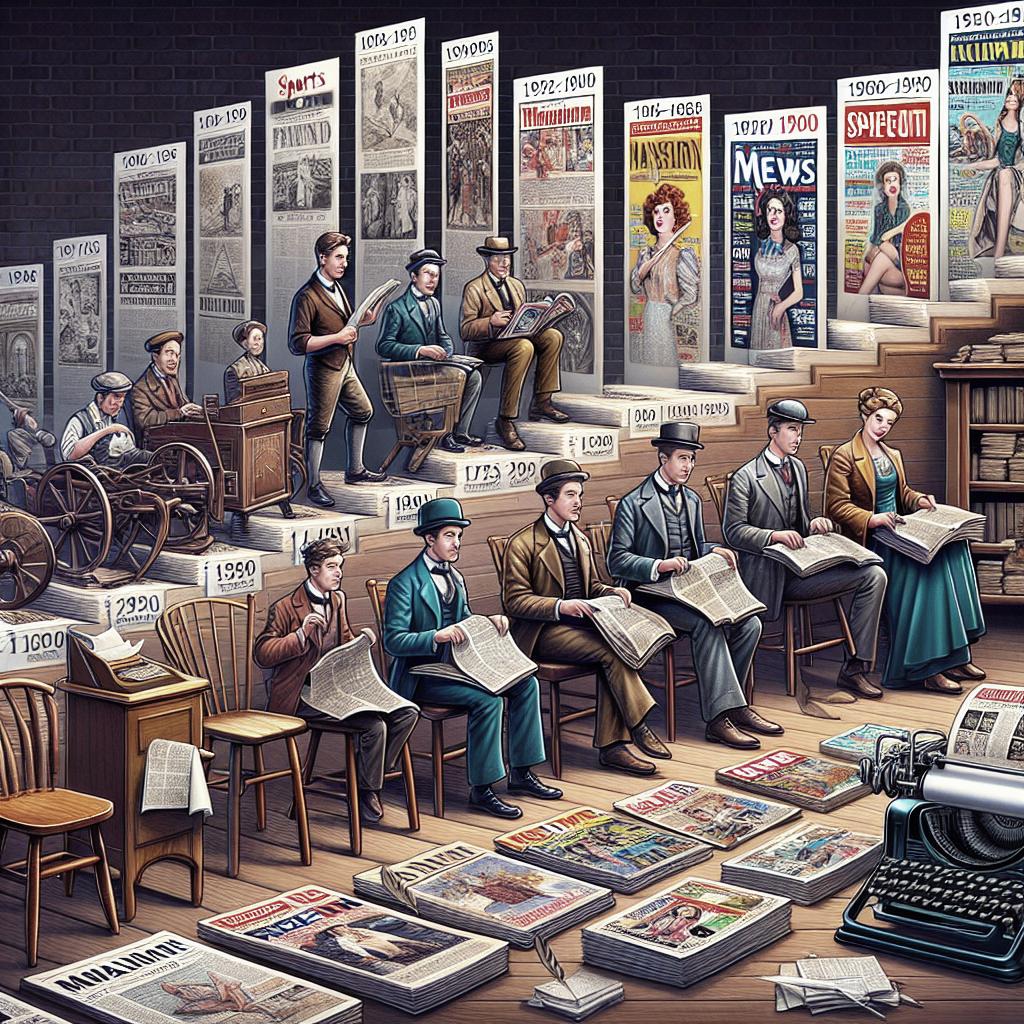“`HTML
Magazines have been an integral part of information dissemination for centuries. From their humble beginnings in the 17th century to the powerhouse publications we see today, magazines have evolved tremendously. This blog post will delve into the history of magazines, exploring how they began, their development across different centuries, and their emergence in Great Britain, Continental Europe, and America. By understanding their history, we can appreciate their role in shaping public discourse and anticipate their future transformations.
Beginnings in the 17th century
The history of magazines can be traced back to the 17th century. One of the first publications that resemble modern magazines was the “Erbauliche Monaths Unterredungen” (Edifying Monthly Discussions), first published in Germany in 1663. This periodical was more emulative of a scholarly journal, providing religious content for a learned audience.
During this period, magazines primarily targeted an educated elite class, focusing on academic and theological discussions. The printing press, invented by Johannes Gutenberg in the mid-15th century, played a crucial role in the proliferation of such publications. With the printing technology becoming more accessible, the feasibility of periodicals aimed at a broader audience set the stage for the larger magazine industry.
Developments in the 18th century
The 18th century saw significant transformations in the magazine industry with the rise of periodicals that catered to a more diverse audience. In 1709, “The Tatler”, launched by Richard Steele, marked a pivotal shift towards entertainment, politics, and social commentary. This was followed by “The Spectator” in 1711, co-founded by Steele and Joseph Addison, which focused on literary and social reform.
These periodicals were characterized by their conversational tone and the inclusion of essays, satire, and news reports, making them accessible and engaging. This century laid the foundation for the commercialization of magazines, transitioning from academic to general-interest topics, and setting the precedent for future publications to follow. The role of literacy also expanded, with more people learning to read and showing interest in various subjects beyond scholarly discourse.
Great Britain
The British magazine industry flourished in the 18th and 19th centuries, with publications like “Gentleman’s Magazine” (first published in 1731 by Edward Cave) shaping the concept of modern magazines. Cave’s magazine was pioneering in its approach, featuring a mix of essays, news, poems, and critiques, and is credited with coining the term “magazine” — derived from the Arabic word “makhazin,” meaning storehouses.
By the Victorian era, magazines like “Punch” (1841) introduced illustrated journalism, combining satirical cartoons with editorial commentary. This period saw the diversification of content, including women’s magazines like “The Lady’s Magazine” (1770), which focused on fashion, literature, and domestic advice. These publications expanded the readership, catering to different social classes and interests, and reinforcing the magazine’s role as a key medium for information and culture dissemination.
Continental Europe
Meanwhile, in Continental Europe, the magazine industry evolved with distinctive regional characteristics. In France, “Le Mercure Galant” (1672), founded by Jean Donneau de Visé, is one of the earliest examples. This publication focused on court life, literature, and poetry, reflecting the sophisticated tastes of French high society.
Germany and other European countries followed suit with their own notable publications. For instance, Christoph Martin Wieland’s “Der Teutsche Merkur” (1773) in Germany served a similar purpose, blending literature with commentary on contemporary issues. Furthermore, the period during and after the Enlightenment significantly impacted European magazines, with ideals of reason, science, and intellectual discourse permeating their content. This intellectual vibrancy helped shape modern journalism and magazine publishing in Europe.
America
The American magazine industry emerged in the latter part of the 18th century. The first American magazine, “American Magazine,” was published in 1741 by Andrew Bradford, although it was short-lived. This was quickly followed by Benjamin Franklin’s “General Magazine,” which also had a brief run. However, these early attempts paved the way for future successes.
The 19th century saw the rise of influential publications such as “Harper’s New Monthly Magazine” (1850) and “The Atlantic Monthly” (1857), which combined literature, political commentary, and news. These magazines contributed to the cultural and intellectual development of the country, reflecting the growing American identity. The advent of industrialization and improved printing technology allowed for greater circulation and affordability, making magazines a staple in American households. Titles like “National Geographic” and “Time” magazines later defined the editorial standards and reach of 20th-century American periodicals, influencing global journalism trends.
Future Prospects
| Century | Milestones | Notable Publications |
|---|---|---|
| 17th Century | Inception of periodicals; scholarly and religious content. | “Erbauliche Monaths Unterredungen” |
| 18th Century | Shift to general-interest topics; commercialization of magazines. | “The Tatler”, “The Spectator” |
| Great Britain | Emergence of diverse content; introduction of illustrated journalism. | “Gentleman’s Magazine”, “Punch”, “The Lady’s Magazine” |
| Continental Europe | Regional focus on court life, literature, Enlightenment ideas. | “Le Mercure Galant”, “Der Teutsche Merkur” |
| America | Rise of influential publications; broader readership and affordability. | “American Magazine”, “Harper’s New Monthly Magazine”, “The Atlantic Monthly” |
“`


